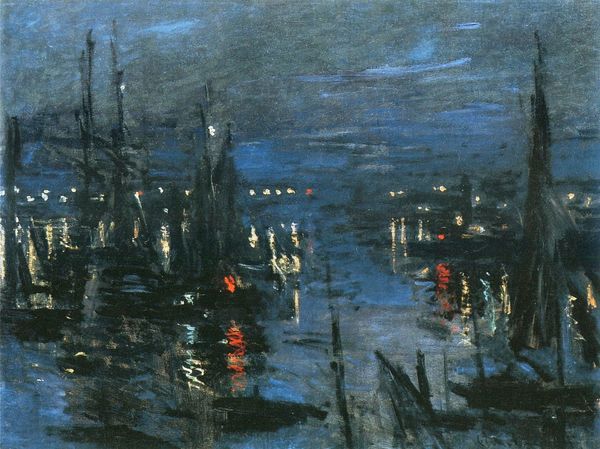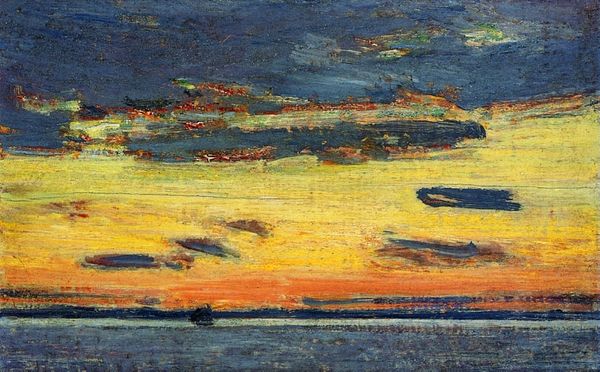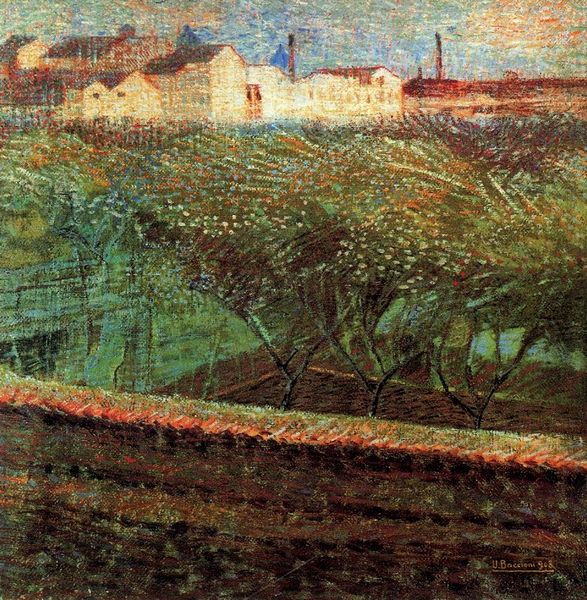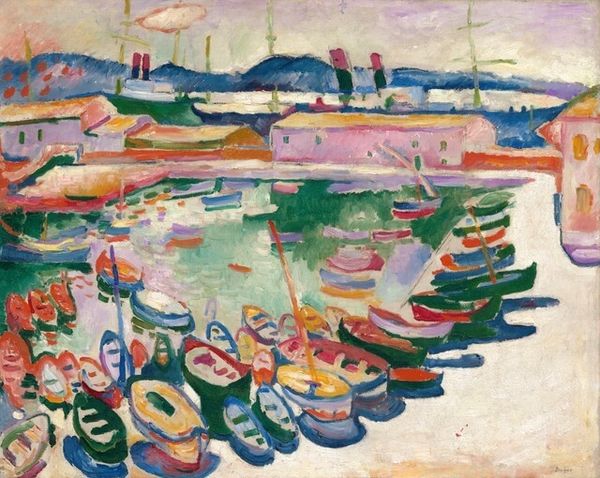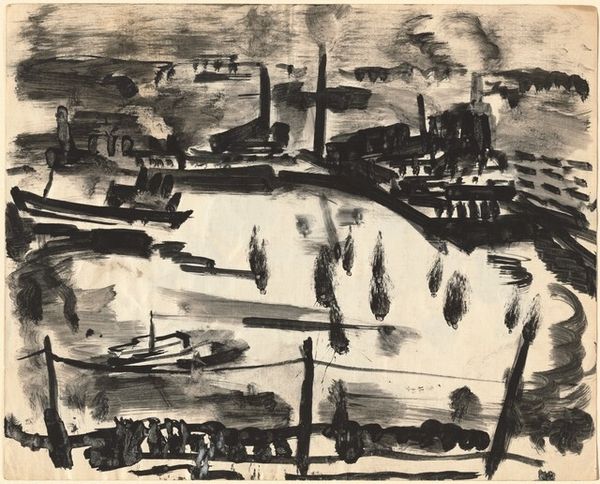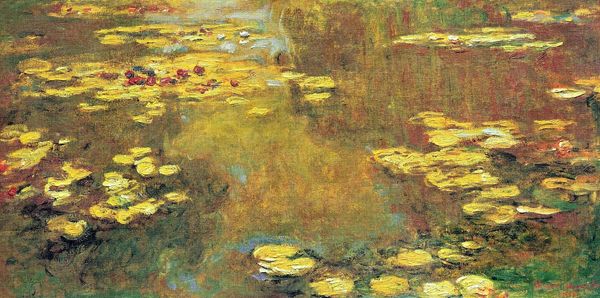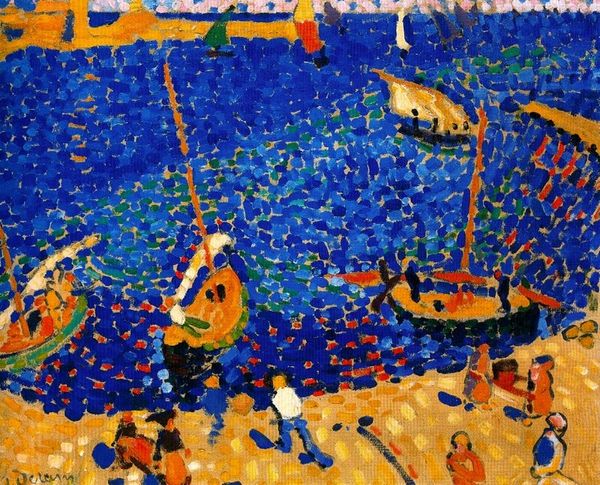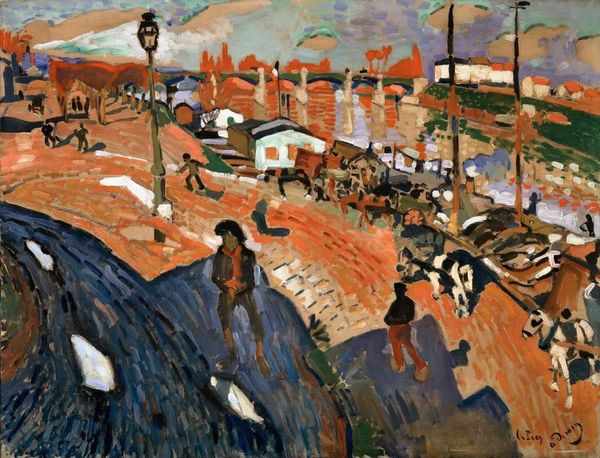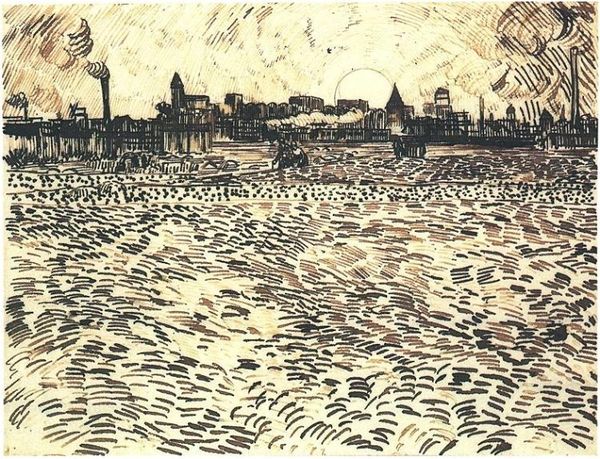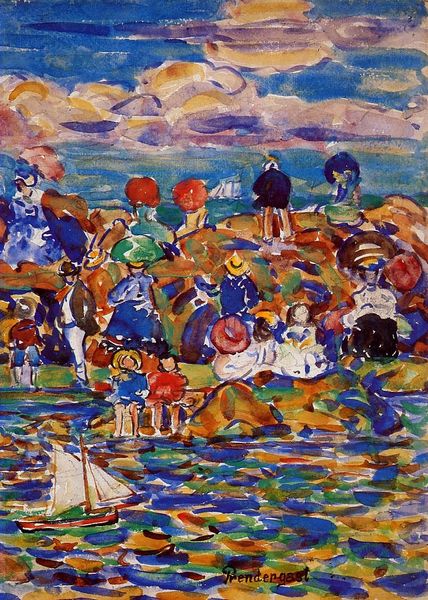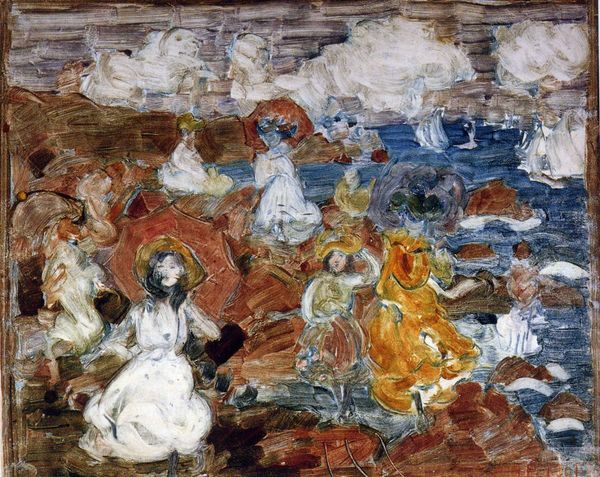
Dimensions: 27.94 x 43.18 cm
Copyright: Public domain
Curator: Looking at Maurice Prendergast’s "Feast of the Redeemer" painted in 1899, rendered in watercolor, my immediate response is festive but dreamlike, almost abstracted. It seems so fluid, ephemeral, a captured moment of celebration. Editor: Yes, there’s an interesting use of light here, isn't it? I think that capturing that essence is rooted in a desire to capture that moment, a desire in the tradition of other artists such as Turek. It gives voice to communities rarely centered in Western artistic tradition and art institutions of the period. I see it as an example of how marginalized identities find moments of self expression through communal rituals and celebration. Curator: Exactly, the brushstrokes really convey this sense of immediacy and movement. And considering that the Feast of the Redeemer is a significant Venetian festival that goes back to the 16th century as thanks for the end of a plague, its fascinating to see this take on a traditional celebration. Public celebrations reinforce civic identity, you know. Prendergast seems aware of how Venice uses ritual and image to construct and market itself. Editor: I absolutely agree. This event, especially as understood today, really speaks to collective experiences of crisis and resilience and the performative aspects of societal recovery, which really resonates now more than ever. I think his rendering reflects our capacity to persist in the face of widespread trauma through art and the ways art, itself, memorializes an identity in flux and creates new stories about our sense of place. Curator: And Prendergast himself, as an American Impressionist working often in Europe, adds another layer. His view, from outside of that deeply established society, offers, possibly, a fresher interpretation of it, less caught up in centuries of Venetian history and hierarchy. Editor: It's in these interstitial spaces that real progress and the interrogation of established power structures become possible through symbolic resistance and counter narrative, but, even, shared cultural experience across national identities. Thank you for discussing "Feast of the Redeemer" with me. Curator: Likewise. I appreciate how you connected this moment of Venetian history with both artistic license, personal experience, and current realities of living within society and place.
Comments
No comments
Be the first to comment and join the conversation on the ultimate creative platform.
